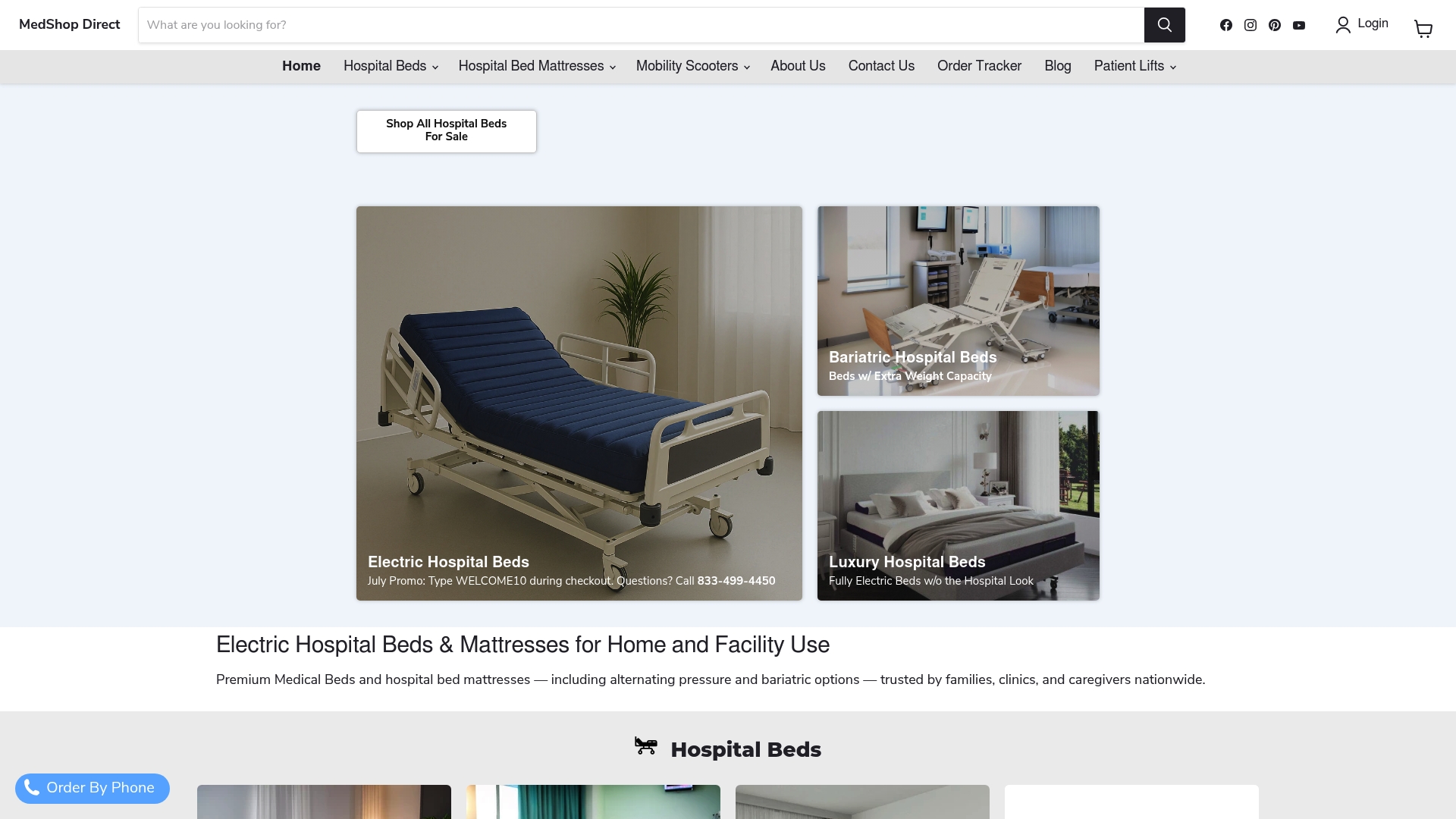

Back pain robs millions of people of restful sleep every night. Surprisingly, a simple bedding choice can have a massive impact on how you wake up each morning. Here is something most people miss: studies show that medium-firm mattresses can significantly improve pain and disability in those with chronic back pain. The mattress you pick is more than just a comfort preference. It can be a turning point for your health.
View our top mattresses for back pain and our number one selection the IC30 by Icare
| Takeaway | Explanation |
|---|---|
| Medium-firm mattresses are beneficial for back pain relief | Research supports that medium-firm mattresses significantly improve pain and disability in patients with chronic back pain by ensuring proper spinal alignment and reducing pressure points. |
| Consider individual factors in mattress selection | Factors such as body weight, sleeping position, and specific pain conditions should guide mattress choice for optimal support and comfort. |
| Use advanced mattress technologies | Modern mattresses featuring adaptive materials and ergonomic designs can provide targeted support and pain relief, improving overall sleep quality. |
| Regular maintenance is crucial | To maintain the therapeutic properties of a mattress, implement protective measures, rotate it regularly, and conduct professional assessments for timely replacement. |
| Tailored solutions for specific patient populations | Different patient needs, such as those in nursing facilities, should inform mattress selections to ensure comfort and mitigate health risks. |
Back pain affects millions of individuals worldwide, transforming seemingly simple activities into challenging experiences. The connection between mattress selection and back pain management is more complex and critical than most people realize. Understanding this relationship requires examining how sleep surfaces impact spinal health and overall physical comfort.
When discussing back pain, the mattress becomes more than just a sleeping surface. It transforms into a therapeutic intervention that can either alleviate or exacerbate existing musculoskeletal challenges. Research from the National Institutes of Health suggests that proper mattress support plays a crucial role in maintaining spinal alignment and reducing chronic pain.
The human spine requires balanced support that accommodates its natural curvature. A mattress that is too firm creates pressure points, while an overly soft surface fails to provide adequate structural support. This delicate balance becomes especially important for patients managing persistent back pain conditions.
A randomized, double-blind, controlled trial found that medium-firm mattresses (with a specific firmness rating) significantly improved pain and disability in patients with chronic non-specific low-back pain. Researchers demonstrated that mattress firmness directly correlates with pain reduction and improved sleep quality.

Choosing a mattress for back pain is not a one-size-fits-all approach. Individual factors such as body weight, sleeping position, and specific pain conditions dramatically influence the optimal mattress selection. A systematic review of controlled trials concluded that medium-firm mattresses, particularly those allowing self-adjustment, offer the most promising outcomes for promoting sleep comfort and spinal alignment.
Key considerations when selecting a mattress for back pain include:
Patients with chronic back pain often require specialized mattress features that go beyond traditional comfort metrics. Clinical studies consistently highlight the importance of personalized mattress selection in managing musculoskeletal discomfort.
Medical professionals increasingly recognize mattress selection as a critical component of comprehensive pain management. A comprehensive review of 39 studies reinforced that medium-firm mattresses promote not just comfort, but also critical elements of healing such as proper spinal alignment and reduced muscular tension.
Patients should approach mattress selection as a medical decision, consulting healthcare providers and considering individual physiological needs. The right mattress can transform sleep from a source of discomfort to a restorative experience that supports healing and pain management.
By understanding the intricate relationship between mattress characteristics and back pain, patients can make informed choices that contribute to their overall physical well-being and quality of life.
Selecting the right mattress for back pain relief requires understanding a complex set of features that go beyond basic comfort. Patients and caregivers must consider multiple critical elements that contribute to effective pain management and optimal spinal support.
The fundamental architecture of a mattress determines its ability to provide therapeutic support for individuals experiencing back pain. Research from the Journal of Chiropractic Medicine indicates that material composition plays a crucial role in managing musculoskeletal discomfort.
Different mattress materials offer unique support characteristics. Memory foam, for instance, adapts to body contours and distributes weight evenly. Latex mattresses provide responsive support with enhanced durability. Hybrid mattresses combine multiple materials to create a balanced support system that addresses various pain management needs.
A systematic review concluded that medium-firm mattresses offer optimal outcomes for individuals with chronic low back pain. Clinical research consistently demonstrates that mattress firmness significantly impacts pain reduction and sleep quality.

Ergonomic design goes beyond simple comfort. For patients managing back pain, a mattress must provide targeted pressure relief and maintain proper spinal alignment. Advanced mattress technologies now incorporate specialized zoning techniques that offer differentiated support for various body regions.
Key ergonomic features include:
Clinical studies suggest that self-adjustable mattresses provide the most promising outcomes for personalized pain management. These innovative designs allow patients to modify support levels according to their specific physiological requirements.
Modern mattress technologies have transformed from passive sleeping surfaces to active pain management tools. Advanced materials like viscoelastic foam and responsive latex offer dynamic support that adapts to body movements and provides continuous comfort.
Emergent mattress technologies incorporate sensors and adaptive mechanisms that monitor sleep positions, pressure distribution, and potential pain triggers. These smart mattress solutions represent a significant advancement in personalized healthcare interventions.
Patients with chronic back pain require more than traditional mattress solutions. The intersection of medical research, material science, and ergonomic design has created a new generation of mattresses specifically engineered to support healing and pain reduction.
Ultimately, choosing a mattress for back pain relief is a nuanced decision that requires careful consideration of individual health needs, body mechanics, and specific pain management goals. By understanding these key features, patients can make informed choices that contribute to improved sleep quality and overall physical well-being.
To help clarify the differences between common mattress materials discussed above, the following table summarizes their main characteristics and benefits for back pain relief.
| Mattress Material | Key Characteristics | Benefits for Back Pain |
|---|---|---|
| Memory Foam | Conforms to body contours, absorbs movement | Even weight distribution, reduces pressure points |
| Latex | Responsive, durable, hypoallergenic | Supportive and resilient, maintains spinal alignment |
| Hybrid | Combines foam, latex, and coils | Balanced support and pressure relief |
| Innerspring | Coil-based support, traditional feel | Firmness varies, may lack pressure relief |
Nursing facilities and patient care environments demand specialized mattress solutions that address complex medical needs. Selecting the right mattress goes beyond individual comfort, encompassing critical factors like pressure distribution, infection control, and overall patient support.
Research from geriatric care studies demonstrates that mattress selection significantly impacts patient comfort and musculoskeletal health. Healthcare administrators must consider multiple factors when choosing mattresses for medical settings.
Institutional mattress requirements differ substantially from residential selections. These mattresses must withstand frequent use, support diverse patient body types, and provide therapeutic benefits. Clinical investigations consistently recommend medium-firm mattresses with specific ergonomic characteristics for optimal patient care.
Key institutional mattress criteria include:
The following table organizes these key clinical considerations for institutional mattress selection and their importance.
| Criterion | Description | Importance in Patient Care |
|---|---|---|
| Durability | Withstands frequent use and transitions | Ensures long-term, reliable support |
| Infection Control | Features antimicrobial surface treatments | Reduces risk of healthcare-associated infections |
| Weight Distribution | Provides even pressure mapping | Prevents bedsores and pressure ulcers |
Modern medical mattresses incorporate sophisticated technologies designed to address complex patient needs. Alternating pressure mattresses, for instance, provide dynamic support that reduces the risk of pressure ulcers and improves patient circulation.
Medical research indicates that mattresses with adjustable firmness zones offer significant advantages in patient comfort and recovery. These advanced systems allow healthcare providers to customize support based on individual patient requirements, accommodating various medical conditions and mobility challenges.
Specialized features such as moisture-wicking fabrics, temperature regulation, and integrated sensor technologies transform mattresses from passive surfaces to active healthcare tools. These innovations support comprehensive patient monitoring and comfort management.
Different patient populations require tailored mattress approaches. Elderly patients with limited mobility need mattresses that minimize pressure points and facilitate easier patient transfers. Rehabilitation patients benefit from mattresses that support gradual recovery and maintain proper spinal alignment.
Nursing facilities must consider factors beyond immediate comfort:
The intersection of medical research, engineering, and patient care has produced mattress solutions that are more than simple sleeping surfaces. They are integral components of comprehensive healthcare strategies, designed to support healing, prevent complications, and improve overall patient quality of life.
Ultimately, choosing the right mattress for patients and nursing facilities requires a holistic approach. Healthcare administrators must balance clinical requirements, patient comfort, economic considerations, and long-term care objectives. By understanding these complex dynamics, medical professionals can make informed decisions that directly contribute to patient well-being and recovery.
Maintaining a mattress designed for back pain relief requires strategic care and proactive management. Proper maintenance extends mattress lifespan and preserves its critical therapeutic properties, ensuring consistent support for patients managing chronic musculoskeletal conditions.
Research from sleep health experts demonstrates that systematic maintenance significantly impacts a mattress’s performance and longevity. Patients and caregivers must implement comprehensive protection strategies to preserve mattress quality.
A high-quality mattress protector serves as the first line of defense against potential damage. Clinical recommendations highlight the importance of creating a hygienic barrier that prevents moisture, allergens, and contaminants from compromising mattress materials.
Key protective measures include:
Proper mattress rotation is crucial for maintaining consistent support and preventing uneven wear. Sleep foundation guidelines recommend rotating mattresses every 6 to 12 months to distribute weight evenly and preserve structural integrity.
For patients with limited mobility or in nursing facilities, professional staff must implement systematic rotation protocols. These techniques help:
Regular professional evaluations determine a mattress’s continued effectiveness in managing back pain. Healthcare providers should conduct periodic assessments to ensure the mattress maintains its therapeutic properties.
Critical indicators signaling potential mattress replacement include:
Medical research suggests that mattresses in clinical settings should undergo comprehensive evaluations every 3-5 years, depending on usage intensity and patient population.
Beyond physical maintenance, patients must also consider environmental factors. Maintaining appropriate room temperature, controlling humidity levels, and minimizing direct sunlight exposure contribute to preserving mattress materials and therapeutic qualities.
Ultimately, mattress maintenance represents an ongoing commitment to patient comfort and health. By implementing systematic care strategies, patients and healthcare providers can maximize the therapeutic potential of specialized back pain relief mattresses, ensuring consistent support and improved quality of life.
Medium-firm mattresses are generally recommended for back pain relief, as they support proper spinal alignment and reduce pressure points.
A mattress affects spinal health by providing the necessary support for natural curvature, preventing pressure buildup and promoting overall comfort during sleep.
It is advisable to assess a mattress for replacement every 3 to 5 years, especially if there are visible sagging or reduced supportive qualities, particularly in clinical settings.
Key features include medium firmness, supportive materials (like memory foam or latex), ergonomic design for lumbar support, and pressure-relieving properties to accommodate individual body shapes.
Struggling to find a mattress that truly supports your healing journey? When back pain disrupts your sleep, the right mattress can make all the difference. As discussed in this guide, the right material and ergonomic mattress design are proven to reduce pressure points, improve spinal alignment, and help manage pain. MedShop Direct specializes in premium options that meet these needs, including hospital beds and advanced alternating pressure mattresses designed for both home and care facility use.

Ready for real relief? Visit MedShop Direct and explore our collection of hospital bed mattresses. See why so many patients and caregivers trust our clinically informed solutions to improve comfort and healing. Now is the perfect time to invest in better sleep and support your recovery. Browse our easy shopping experience and take charge of your comfort and well-being today.
placeholder